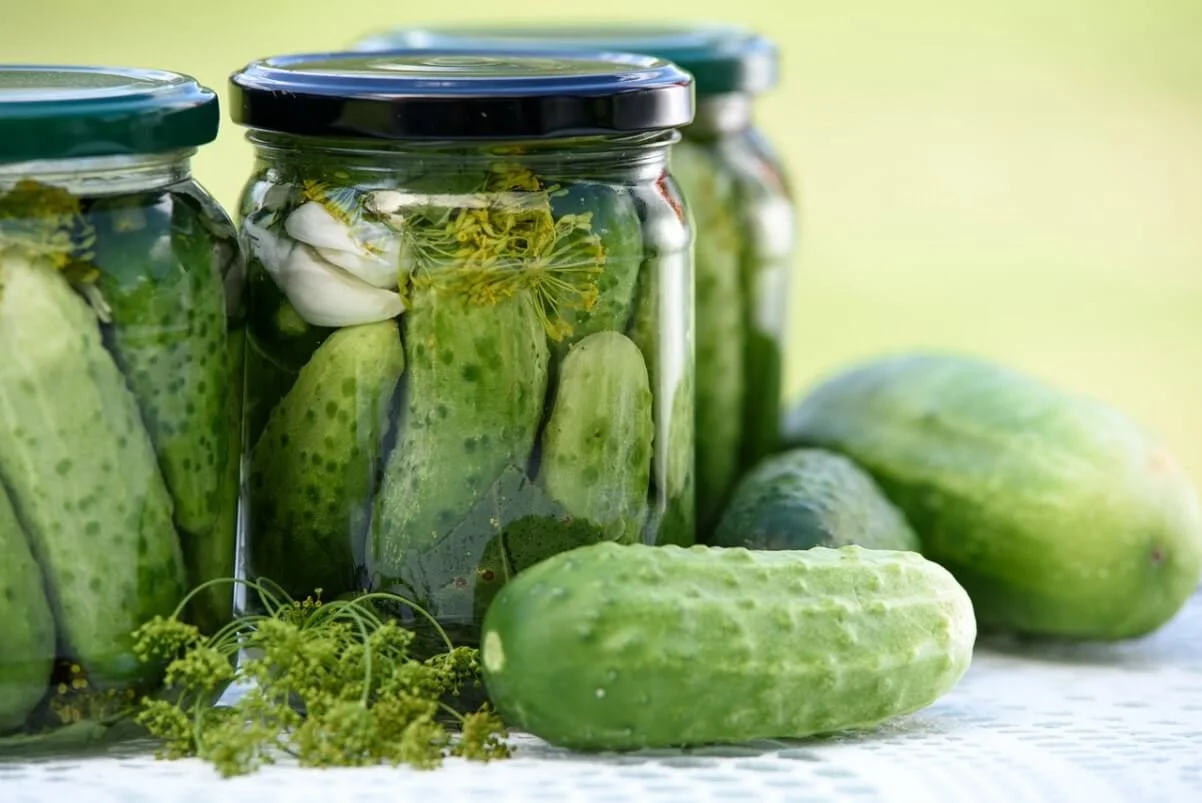How to Make Homemade Pickles
Discover > Texas Home Cooking > Pickling > How to Make Homemade Pickles
Who doesn’t love homemade pickles? Pickled cucumbers, pickled onions, pickled eggs. There is virtually no fresh food that wouldn’t taste great pickled. From vegetables and fruits, to meat and dairy pickling is one of the best food preservers available.
But what is pickling? And what are the best ratios to get the job done? And exactly what is the difference between fermenting and pickling?
Allow me to enlighten you:
Pickling is a method of food preservation that works by immersing foods in an acidic solution, like vinegar, that changes both the taste and texture of the food. It also involves the use of heat, which serves to destroy and inhibit the growth of any microorganisms. In order for the pickling process to begin the pH level must be under 4.6, which is enough to kill the majority of bacteria.
Pickling Onions: A Comprehensive Guide to Preserve and Enhance Flavor
Elevate your culinary skills with our detailed guide to pickling onions, a comprehensive resource to help you preserve and enhance their unique flavor profile.
Now you may ask yourself, what’s the difference between fermenting and pickling? Well, the answer is quite simple, Pickling involves immersing foods in an acidic liquid to achieve a sour flavor; when foods are fermented, the sour flavor is a result of a chemical reaction between a food’s sugars and naturally present bacteria — no added acid is required.
Spices are often added to the brine such as peppercors, mustard seeds (how long do mustard seeds last?), dill (how long does dill last?) seeds (how long do dill seeds last?), allspice berries (how long do allspice berries last?), bay leaves and so many more.
So. Let’s get into how to make some of these bad boys;
A good general rule to follow is ⅔ vinegar to ⅓ water, but if your following a recipe of your choosing, follow the direction exactly to avoid spoilage.
For the Pickling Liquid
2 cups of vinegar – white, red wine, apple cider(or maybe a combination)
2 cups of water
2 Tbsp very fine salt
4-6 Tbsp sugar
Spices
It’s very hard to go wrong using spices. Combinations with the following ingredients:
Fresh herbs (how long do fresh herbs last?) such as dill, parsley, coriander, etc.
Seeds (how long do seeds last?) such as mustard seeds, dill seeds, celery seeds (how long do celery seeds last?), fennel seeds, (how long do fennel seeds last?) coriander seeds (how long do coriander seeds last?), etc.
Spices like peppercorns, whole cloves, star anise, (how long does star anise last?) chilli flakes, whole allspice, bay leaves, cinnamon… you get the picture.
Adding some fresh aromatics such as chili, garlic, and ginger can really boost the flavor of the pickle.
Veggies to Pickle
Again, same with the spices; when it comes to pickling things, the sky’s the limit. By no means are you restricted to vegetables either. From sweet fruits to meat, dairy and other animal produce, here’s a list of some popular fresh foods to pickle.
Cucumber, beets, onions, cauliflower, tomatoes, bell peppers, carrots, radishes, turnips, okra etc, etc;
Pears, apples, peaches, pineapple, blueberries, figs, and even watermelon rinds;
beef; also referred to as corned beef, pork, pickled chicken, including the feet, and so and so on.
How to Pickle
Finally to the process of pickling. The process is simple:
First make sure all your jars and utensils are washed with soapy, warm water and dried nicely.
Wash and dry all your vegetables. Now there’s no rule as to how big a pickle has to be, however, the larger the vegetable the longer the pickling process takes. So we recommend cutting your veggies into chunks. Be sure to cut the ends off all your veggies as these release enzymes that’ll make your pickles go soggy.
Pack all your vegetables into the jar leaving an inch of space from the top. Make sure you don’t smash anything!
To make the brine combine vinegar, water, salt, and pepper and bring to a slight boil. Make sure you do not overcook the mixture this will also make the pickles soggy.
Pour the mixture into the jar, tap it lightly on the counter, to release air bubbles, then seal the jar and store it preferably in the fridge.
Pickling Beets: A Comprehensive Guide to Perfect Results
Embark on a journey of preserving the vibrant flavors of beets with our comprehensive guide to pickling, ensuring perfect results every time.
Tip: Try to wait at least 48 hours before digging into your delicious homemade pickles.



